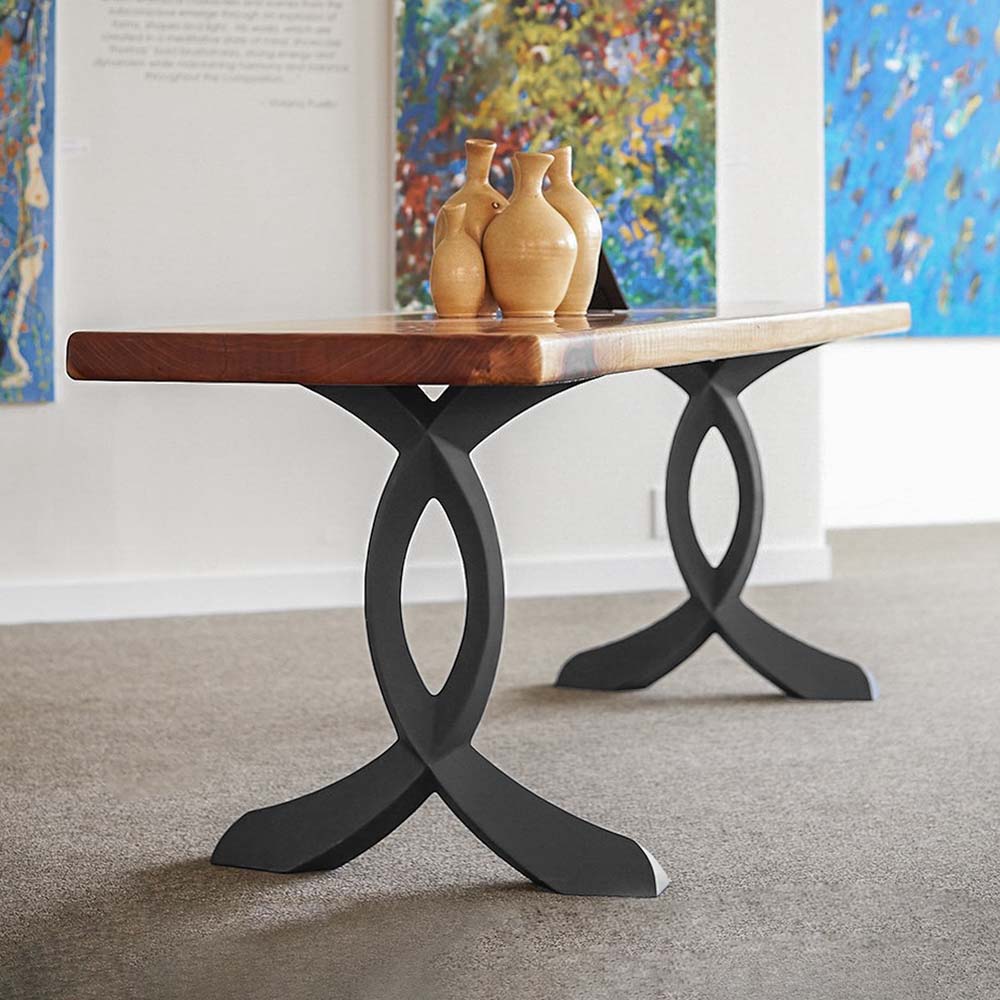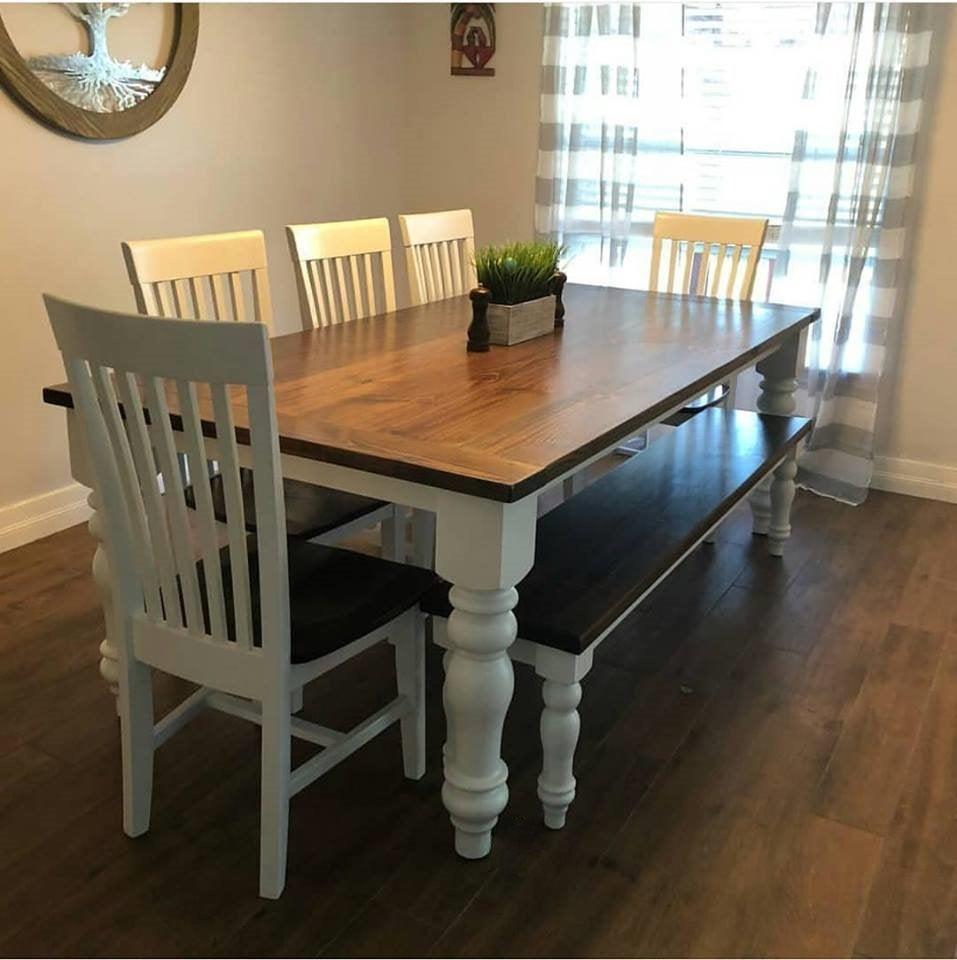Update Your Furniture with Stylish Dining Room Table Legs
Update Your Furniture with Stylish Dining Room Table Legs
Blog Article
Choosing the Perfect Eating Table: What Styles Work Best for Your Home?
Picking the perfect eating table for your home can be a nuanced process that stabilizes visual appeals and capability. To navigate these choices successfully and locate a table that genuinely complements your home, consider the following aspects in detail.
Examining Your Area
Evaluating the measurements and format of your dining location is an essential very first step in picking the excellent eating table. Begin by determining the size and width of the space, making up doorways, windows, and various other architectural functions that might affect table positioning. This makes certain that your table not just fits however also enables for comfy motion around it.
Take into consideration the variety of individuals you typically amuse. A table needs to suit your house's day-to-day demands while using enough flexibility for occasional guests. As a guideline of thumb, assign at the very least 24 inches of table width per individual to make certain a comfy eating experience.
It's likewise necessary to keep proper clearance around the table. Ideally, there ought to be at the very least 36 inches in between the table edge and wall surfaces or other furniture, enabling very easy accessibility and motion. For spaces where chairs with arms or added storage space systems like buffets are involved, increasing this clearance to 48 inches is advisable.
Lights and environment play considerable roles as well. Make certain that your dining table aligns with existing lights fixtures or strategy for adequate illumination services. This extensive spatial analysis assurances that your eating table not just fits physically however also integrates with your space's total functionality and aesthetic.
Popular Table Styles

Conventional dining tables typically feature ornate details, curved legs, and rich wood finishes, stimulating a feeling of ageless sophistication. They are best for homes with traditional design or those seeking to include a touch of class to their dining area.
Modern eating tables focus on simplicity and clean lines, often incorporating materials like glass and metal. These tables are perfect for contemporary rooms, supplying a smooth and uncluttered appearance that matches minimal style approaches.
Rustic dining tables, on the various other hand, highlight natural products and a handmade appearance - dining room table legs. They usually feature redeemed wood and a distressed coating, creating a cozy and welcoming atmosphere. These tables function well in farmhouse-style homes or those seeking a cozy, natural feel
Industrial eating tables integrate resources such as metal and wood, typically showcasing a practical aesthetic. This style is well-suited for loft spaces or city rooms, adding a touch of sturdy appeal and toughness to the dining experience.
Each design uses unique advantages, making it important to pick one that aligns with your home's general style and your individual choices.
Product Options
When choosing a table, the selection of material plays a crucial duty in identifying both the table's appearances and performance. Timber, steel, glass, and composite products each offer unique benefits and challenges, making it necessary to line up the product with your home's decoration and way of living demands.
Wood is an ageless and versatile choice, readily available in varieties such as oak, walnut, and mahogany. Recognized for its longevity and warmth, timber matches both typical and contemporary interiors. It calls for normal upkeep to avoid scrapes and warping.
Metal tables, usually crafted from stainless-steel, aluminum, or functioned iron, are applauded for their modern appeal and toughness. They are specifically suited for industrial or minimalist settings yet can be susceptible to damages and try this may feel chilly to the touch.
Glass table bring an air of sophistication and visibility, perfect for smaller sized rooms as they develop an impression of even more space. While simple to tidy, glass can be susceptible to spots and calls for mindful handling to avoid chips and splits.
Composite products, such as MDF and plywood, deal economical and personalized remedies, though they may lack the longevity of natural materials. Picking the appropriate material ensures your table is both a functional asset and an aesthetic joy.
Sizes And Shape Considerations
After determining the ideal product for your eating table, the next consideration is picking the ideal shape and size to match your area. The form of the table considerably affects the area's aesthetic and functionality. Rectangle-shaped tables, the most common form, are perfect for larger rooms and can fit a higher variety of guests. They additionally enable a more formal eating experience. Conversely, rounded tables promote a sense of affection and are outstanding for smaller sized dining locations, urging discussion by eliminating edges and making everyone really feel similarly consisted of.
Size is just as essential and need to be dictated by both the space's measurements and the variety of people you intend to seat routinely. As a regulation of thumb, allocate at the very least 24 inches of table size per person to guarantee comfy eating. In addition, consider the table's clearance area: there need to go to least 36 inches between the table edge and the wall surfaces or various other furnishings. This ensures that diners can walk around conveniently without really feeling confined. Extending tables provide versatility if you often organize bigger celebrations, providing additional seating when needed without occupying additional area daily. Selecting the best sizes and shape makes sure both functionality and visual consistency in your eating location.
Matching Your Design
Picking a table that harmonizes with your existing style is crucial in producing a cohesive and welcoming area. Begin by evaluating your existing indoor design style, whether it be modern, standard, rustic, or eclectic. The eating table need to enhance the total visual, not take on it. A sleek, minimal table with clean lines is excellent for a modern-day home, while a vintage, luxuriant table suits an extra traditional setup.
Shade and material are similarly substantial. If your decor features cozy tones and all-natural materials, think about a wood table to enhance the organic feeling. Alternatively, Read Full Report a glass or metal table may be extra appropriate in an area controlled by trendy colors and industrial aspects. Pay focus to the finish, as it ought to mirror other furnishings and components to keep harmony.
Structure plays an essential role as well. A rough-hewn, reclaimed wood table my blog can add character to a rustic room, while a refined marble surface can raise a luxurious eating location. Take into consideration the range and percentage of the table in connection to the space size and existing furniture. A well-matched table not only boosts aesthetic allure however likewise enriches the overall eating experience.

Verdict
Choosing the suitable eating table demands mindful factor to consider of room, design, products, form, and size. Conventional tables complement classic interiors with rich timber coatings, while modern-day tables match modern settings through glass and metal.
Report this page